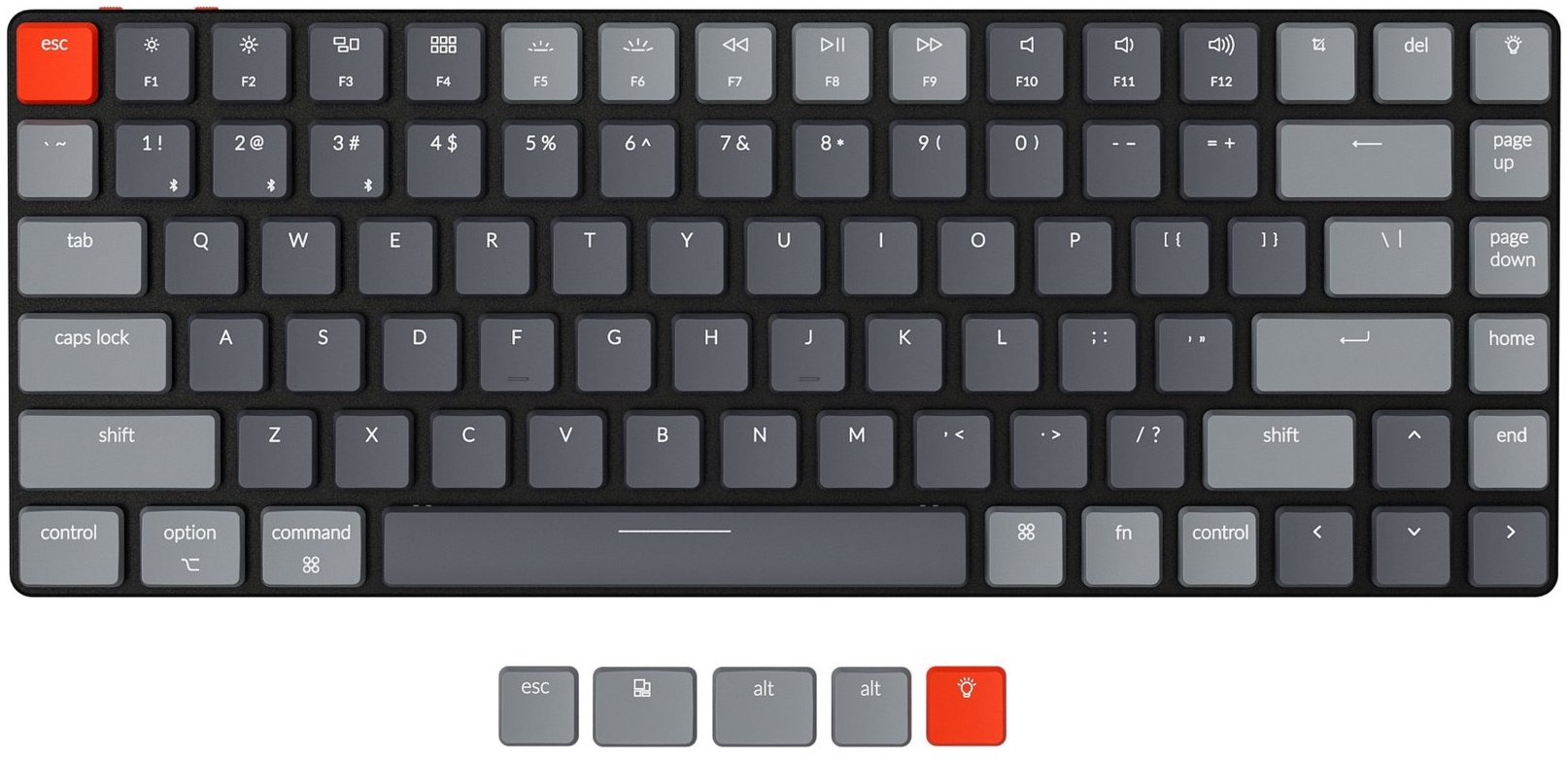iMore Verdict
Bottom line: Keychron K3 is a slim and lightweight, low-profile mechanical keyboard with a compact 75% layout. It has your choice of white or RGB backlighting, Low Profile Gateron Mechanical switches, and there is a hot-swappable optical switch option. It's made for Macs and iOS out of the box, but you can use it with Windows and Android as well, with wireless Bluetooth connectivity.
Pros
- +
Slim and lightweight aluminum body
- +
Compact 75% layout with Low Profile caps
- +
Hot-swappable (Optical only)
- +
Wireless Bluetooth connectivity with cross-platform support
- +
Choice of backlighting and switches
Cons
- -
Hard to find replacement keycaps
- -
Hot-swap only for Optical switches
- -
Low Profile is not for everyone
You can always trust iMore.
During my quarantine time, I decided to pick up a new (expensive) hobby — mechanical keyboards. Ever since I received my first mechanical board, the Keychron K2, I've been hooked and have been trying out as many mechanicals that I can get my hands on. I don't think I could ever go back to a standard laptop or even Apple Magic Keyboard ever again. There's just something about being able to customize my keyboard to my exact preferences and style that is hard to give up.
So far, I have had a lot of experience with different Keychron keyboards, from the K2v2 to the K1v4 to the K4v2. Keychron does have a newer low-profile mechanical keyboard available for pre-order right now, which is the K3 (first version). This is similar to the K1v4 that I've tried out, but there are some key differences.
For this review, I got the K3 with RGB backlighting and Low Profile Keychron Optical Black switches. The hot-swap option is only available on the Keychron Optical version, and there are three more switch options to choose from with the Optical version: White (Linear), Black (Linear), and Orange (Clicky). The price varies depending on whether you purchase the White or RGB version.
A lightweight and compact keyboard that makes typing comfortable
Keychron K3 review: What I like
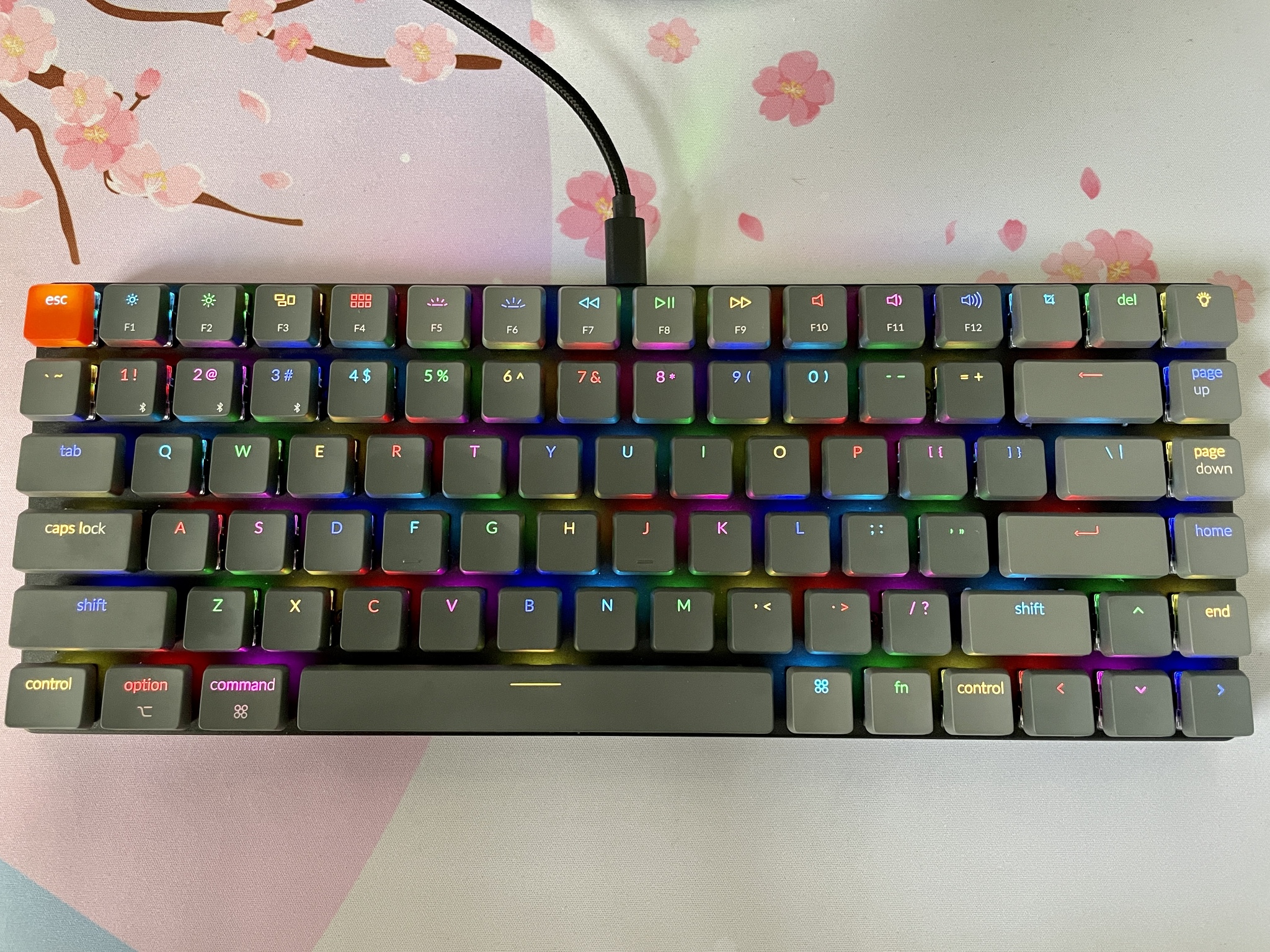
The Keychron K3 is an interesting addition to the existing Keychron lineup. That's because it's a 75% layout, just like the K2, but instead of the traditional profile of mechanical keyboards, it is low profile like the K1. As I said in my original Keychron K1v4 review, low profile switches are like a hybrid between an Apple Magic Keyboard and a mechanical. So if the Apple Magic Keyboard, along with alternatives and other laptop-style keyboards, are just too "mushy" for you, but you don't like the "thocc" of regular mechanicals, then a low profile board could be what you're looking for.
The K3 low profile switches and keycaps are about half the height of traditional switches and caps. So it feels similar to something like the Apple Magic Keyboard with less key travel while still offering the tactile feeling of a mechanical switch. For my K3 unit, it came pre-installed with Optical Black switches, which fall under the quiet Linear category. The black switches have an actuation force of 50±10gf, so they do require some pressure before a keystroke is registered.
Since these are classified as linear and quiet, I can definitely confirm that they are — compared with the previous Gateron Browns and Blues that I have on other boards, you can barely hear these. This makes them great while you're typing away in video meetings, and other people within the vicinity shouldn't be bothered by you.
iMore offers spot-on advice and guidance from our team of experts, with decades of Apple device experience to lean on. Learn more with iMore!
I was also sent packs of Keychron Low Profile Optical White and Red switches, which are also Linear. The White switches have an actuation force of 30±10gf, and the Reds have an actuation force of 40±10gf. This means that they should be easier to push down to register a keystroke compared to the Black switches that I've been using, but I haven't felt the need to switch them out just yet. For the record, the Optical Black switches have the same actuation force as the tactile Browns, but the Blacks are just quieter. Other Optical switch options include the loud and clicky Blues (48±10gf) and Oranges (55±10gf).
If you don't care about hot-swapping, then there are the Gateron Low Profile Mechanical switches; linear and silent Reds (50±15gf), loud and clicky Blues (52±15gf), and gentle and tactile Browns (55±15gf). The pre-travel distance on the Gateron Low Profile switches are 1.5±0.5mm, so total travel is 2.75±0.25mm, compared to 1.1±0.3mm pre-travel and 2.5±0.3mm total travel on the Opticals.
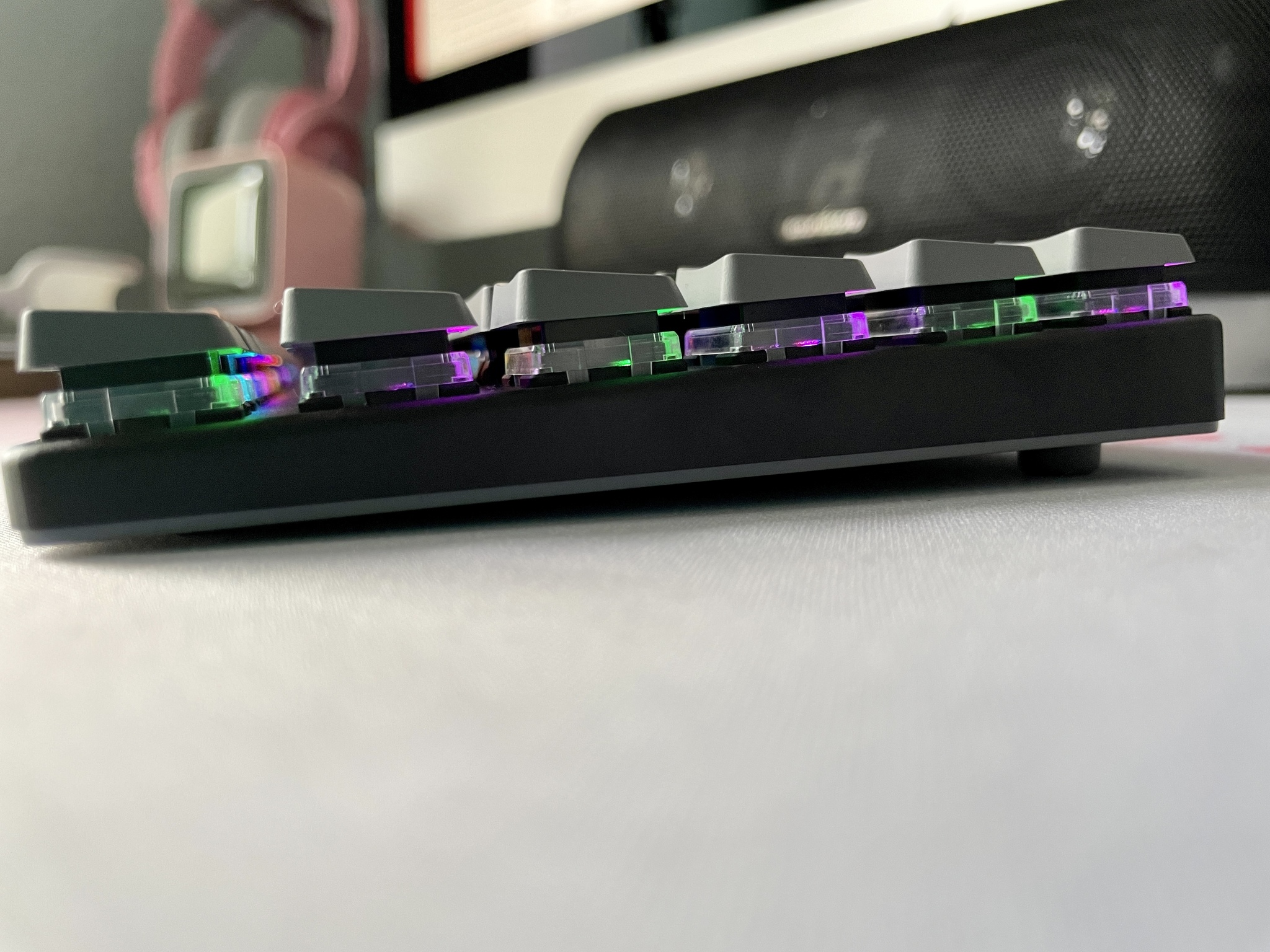
One of the best things about the K3 is that it is overall very comfortable to type on. Since it's so slim and low profile, it isn't very tall, which is an issue with the other traditional mechanical keyboards — I need to use a wrist rest for those. With the K3, even though it's mostly flat (there's a very slight incline with the rubber feet at the bottom), it doesn't feel uncomfortable to type on for longer periods of time. I do wish that it had kickstand feet like the other boards to give more of an angle, but it's not a dealbreaker.
Like other Keychron boards, the K3 can be used wired or wirelessly — either way, it uses USB-C to plug in and charge, and the provided cable is braided nylon. The USB-C port is located at the top center (like the K1v4), which is an improvement over the left port on the K2 and K4. The toggles to switch between Cable or Bluetooth, and Mac/iOS or Windows/Android is also located in the top left, rather than the side. Keychron decided to make the toggles bright orange with easier to read the white text this time around, which makes it easier to see what it's set to.

I prefer to keep my keyboards plugged into my computer when using them, but the 1550mAh battery on the K3 should last up to 34 hours on a single charge with the backlighting. If you keep the lighting off, then it should last longer than that. This seems shorter than the battery life on the K2 and K4, but it makes sense, considering that the K3 is much slimmer, so there's less battery room.
With the Keychron K1, one of my biggest complaints was that due to the two-pronged low profile switches, it's pretty much impossible to find alternative keycaps for it. Thankfully, it appears that Keychron has fixed that problem with the K3. That's because both low profile switches (Gateron Mechanical and Keychron Optical) have MX-styled stems, as well as MX-styled stabilizers on the larger keys (space bar, left Shift, backspace, and Enter). Keychron claims this improves overall reliability, typing experience and could possibly start the road for keycap manufacturers to make compatible stems.
If you already have a Cherry MX keycap set, it does appear that you can use them on the K3, but it may be a very tight fit. Of course, this also means the keycaps would be higher, and they may hit the faceplate when pressed down. Doing this may eliminate the main point of the K3, though, which is low profile. Still, it's not impossible.
Always with the ABS
Keychron K3 review: What I don't like
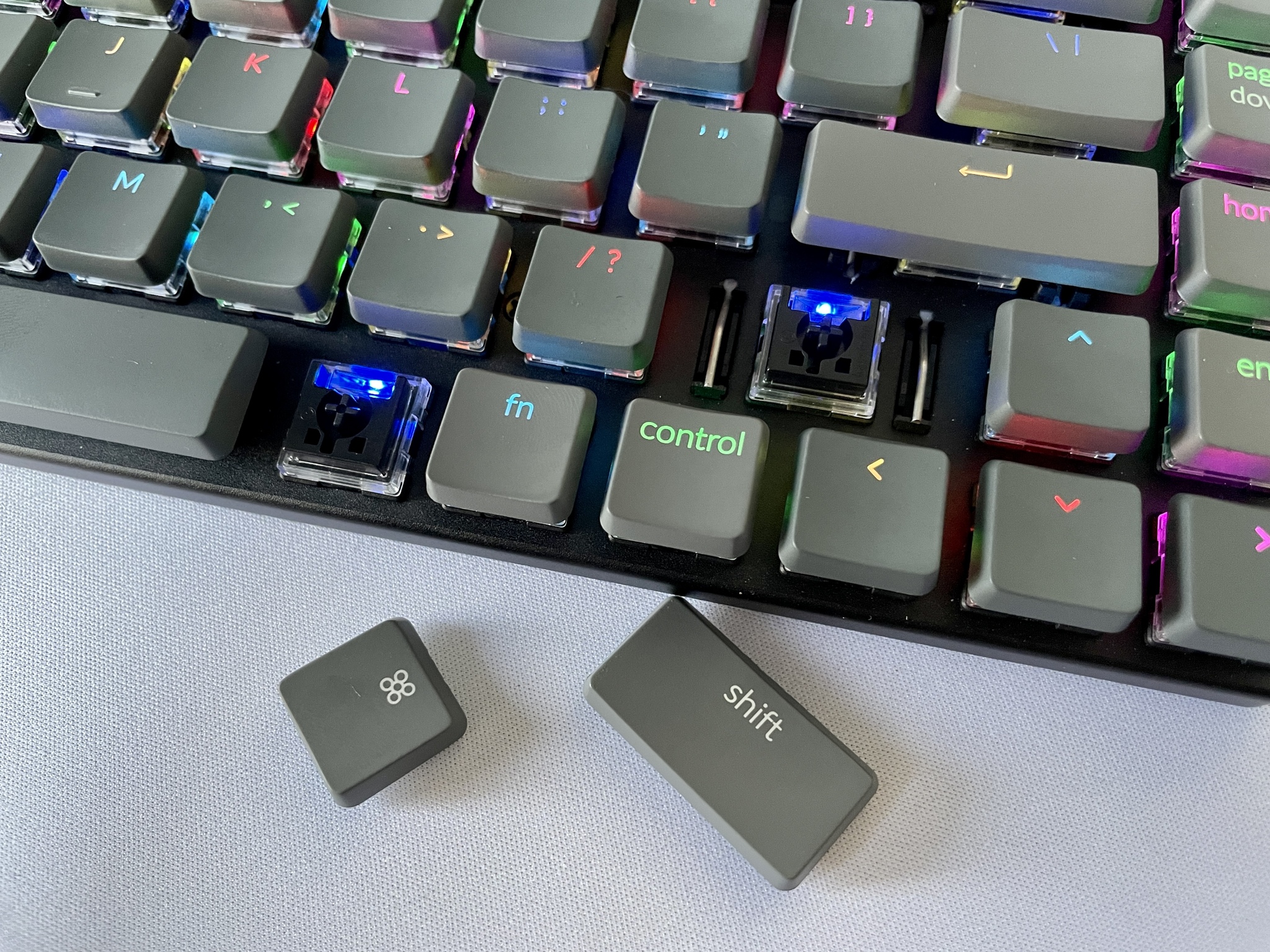
While the K3 comes with sleek, matte keycaps by default, they're made from ABS plastic. This means that they will get shiny over time the more you use the K3, just like all of the Keychron boards. I wish they would come with PBT double shot keycaps for this, but I'm sure that would increase the cost. While you can purchase a K3 keycap set from Keychron, this one is also ABS plastic, not PBT double shot. I suppose you can always use an existing Cherry MX-stem keycap set that you already have, though it won't be low profile. Even though Keychron made the K3 compatible with MX-style stems, it is left up to third-party manufacturers to make specifically low profile keycaps, which is not a guarantee.
I may have grown accustomed to having kickstand feet at the bottom of my keyboards, allowing me to adjust the typing angle even further. That is absent on the K3, but it does have a slight incline by default, so at least there's that. Still, having the option would have been nice.
If you're used to traditional mechanical keyboard profiles, then low profile may take some time to get adjusted to. Even though it's the same 75% layout as my K2, I have noticed I make more typos on the K3 in the first few days. However, this could be a combination of both the low profile and linear black optical switches.
The competition
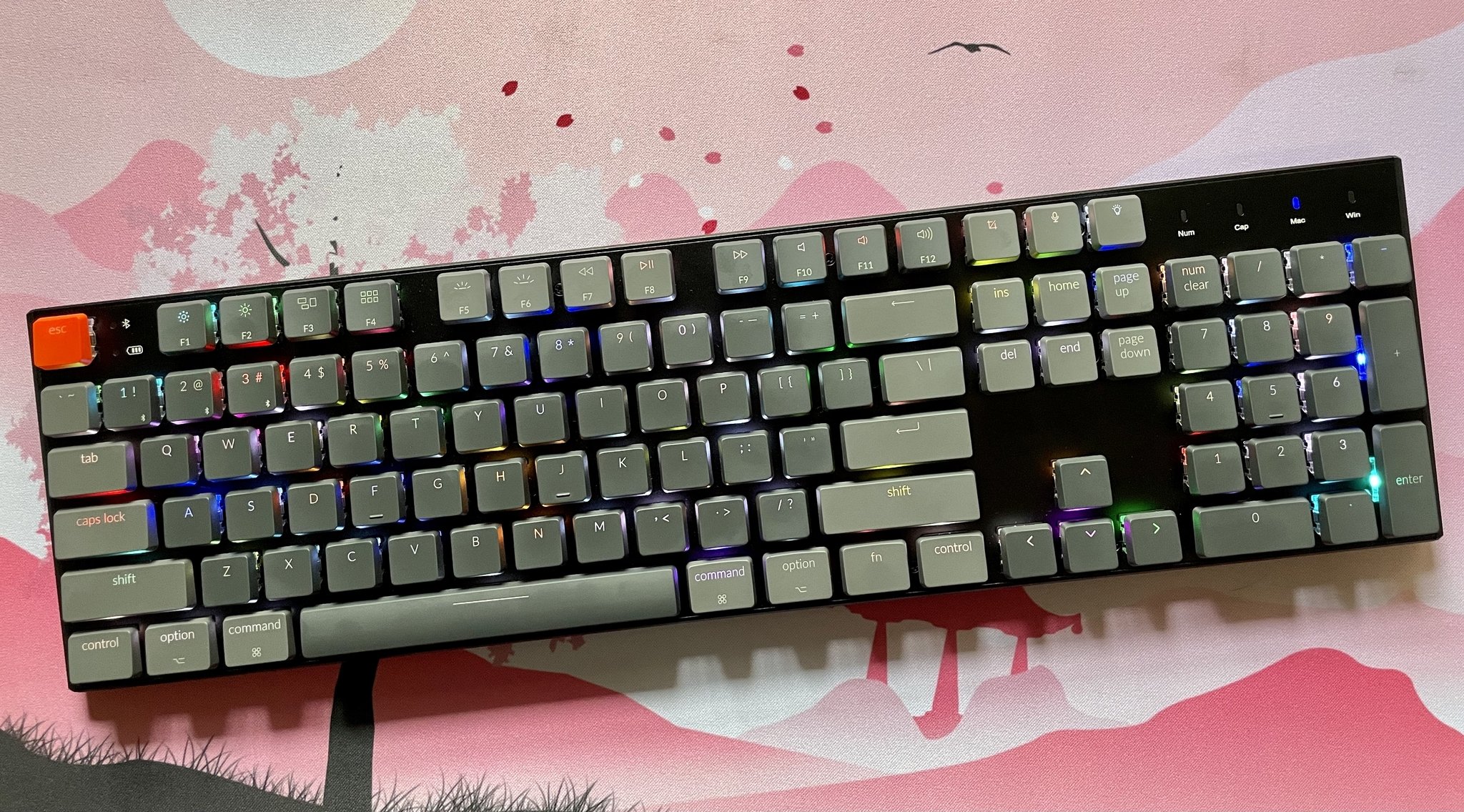
At the moment, the only real "competitor" to the K3 that I've personally tried is the company's own K1v4. If you prefer the 80% ten key-less (TKL) layout or need a full-on number pad, then the K1v4 is the better option for you. However, it won't have the option for optical switches (ultra-low latency) or hot-swap (change switches without soldering), but the battery life is slightly better (36-38 hours with backlighting on a 2000mAh battery).
Keychron K3 review: Should you buy
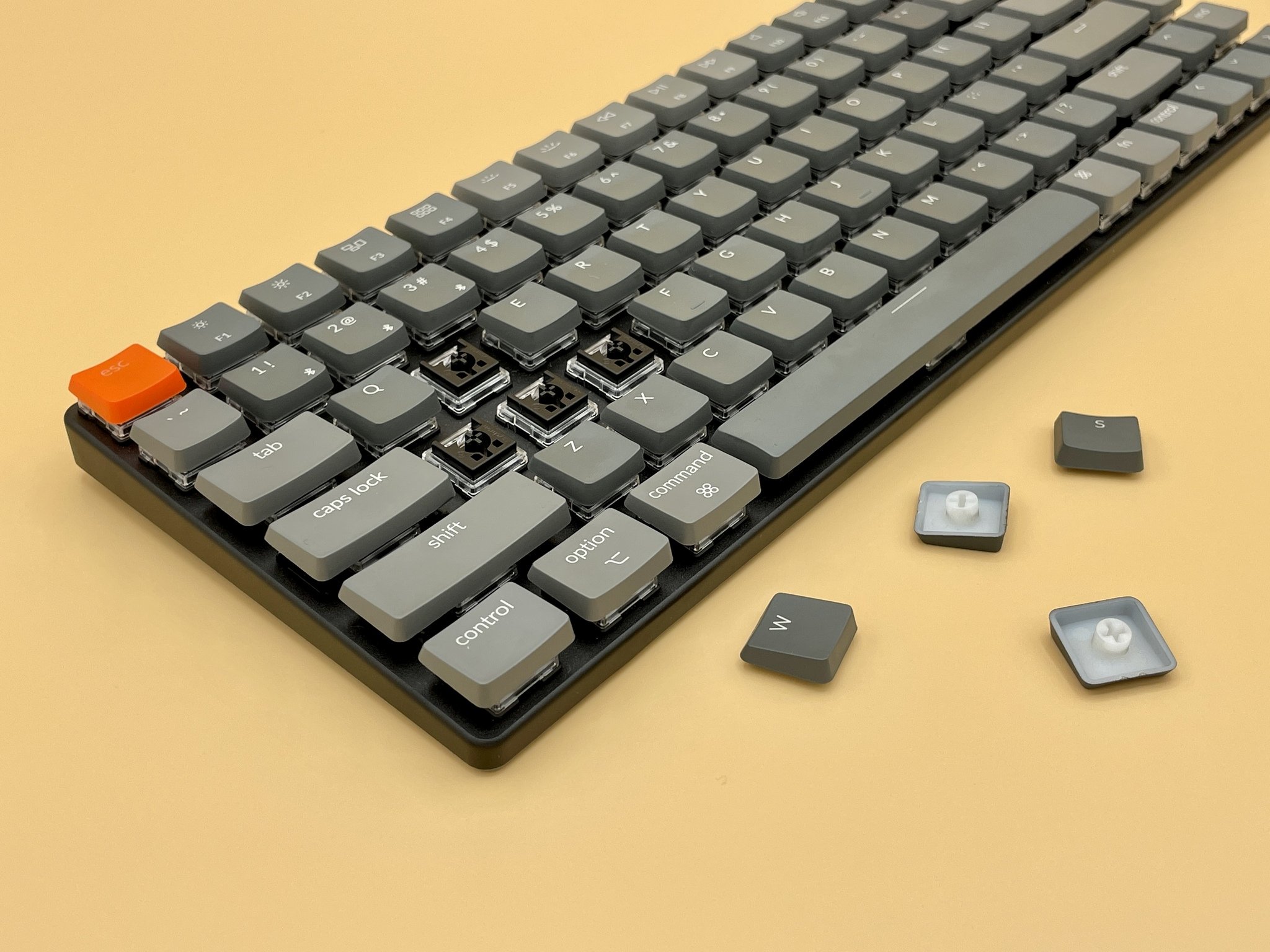
You should buy this if ...
You want a compact mechanical keyboard
The K3 is a 75% layout, which offers enough functionality for most people while also taking up less space on your desk. This leaves you with more room for your mouse and whatever else you want on your desktop.
You like low profile keys
If you're used to laptops or the Apple Magic Keyboard, but want to try out mechanicals, then the K3 is a good place to start. The compact layout is similar to the Magic Keyboard layout with a few minor differences, but the low profile keys are comfortable and give you the mechanical feel without overwhelming you.
You like having options
The greatest thing about mechanical keyboards, in general, is the fact that there are so many options for them. The K3 gives you the choice of white or RGB backlighting, Gateron Low Profile Mechanical or Keychron Optical switches, and the Optical option is also hot-swappable, so you can change out the optical low profile switches as you see fit. The keycaps are still limited, but technically regular Cherry MX-stem caps should fit.
You should not buy this if ...
You don't care for low profile boards
If you prefer traditional mechanical keyboards, then the low profile may not be for you. This is more of a hybrid between Apple Magic Keyboards and a mechanical.
You need a number pad
For those who do a lot of data input, the 75% layout of the K3 won't work since there is no number pad. For that, I recommend the full-size K1v4, or the 96% K4v2, as those have the 10-key.
You want to be able to customize the keycaps
While Keychron made the K3 so that it should be easier for third-party manufacturers to make low-profile keycaps, the market is currently limited right now. Most keycap sets that launch in limited group buys would be for regular mechanical keyboards, and you hardly ever see low profile ones. So be warned — if you like to customize and theme your board, you won't have a lot of options right now, aside from Keychron's own K3 keycap set.
If you're someone who has only used laptop or Apple Magic Keyboard-style boards but wants to start venturing into the mechanical world, then the Keychron K3 is a great starting point. The low profile switches and keycaps are like a hybrid of chiclet and mechanical, and it's actually fairly comfortable to type with. Plus, the 75% form factor helps you save space on your desk while still giving you all of the most important functionalities of a keyboard. You can also choose between white or RGB backlighting, as well as Gateron Low Profile Mechanical or Keychron Optical switches — supposedly, the optical ones are better if you prefer lower latency. The Optical version is also hot-swappable, so you can change out the switches to a different type/color (as long as it's still Low Profile Keychron Optical) without having to deal with soldering.
However, for those who need a number pad for things like data entry, the K3 won't be the keyboard for you since it lacks a 10-key. If you also prefer the way a traditional mechanical keyboard looks, sounds, and feels, then the K3 may not be the best choice either. And don't forget that you may be limited in keycap choice due to the low profile, and while the MX-style stems on the low profile switches could work with existing keycaps, it won't be optimal.



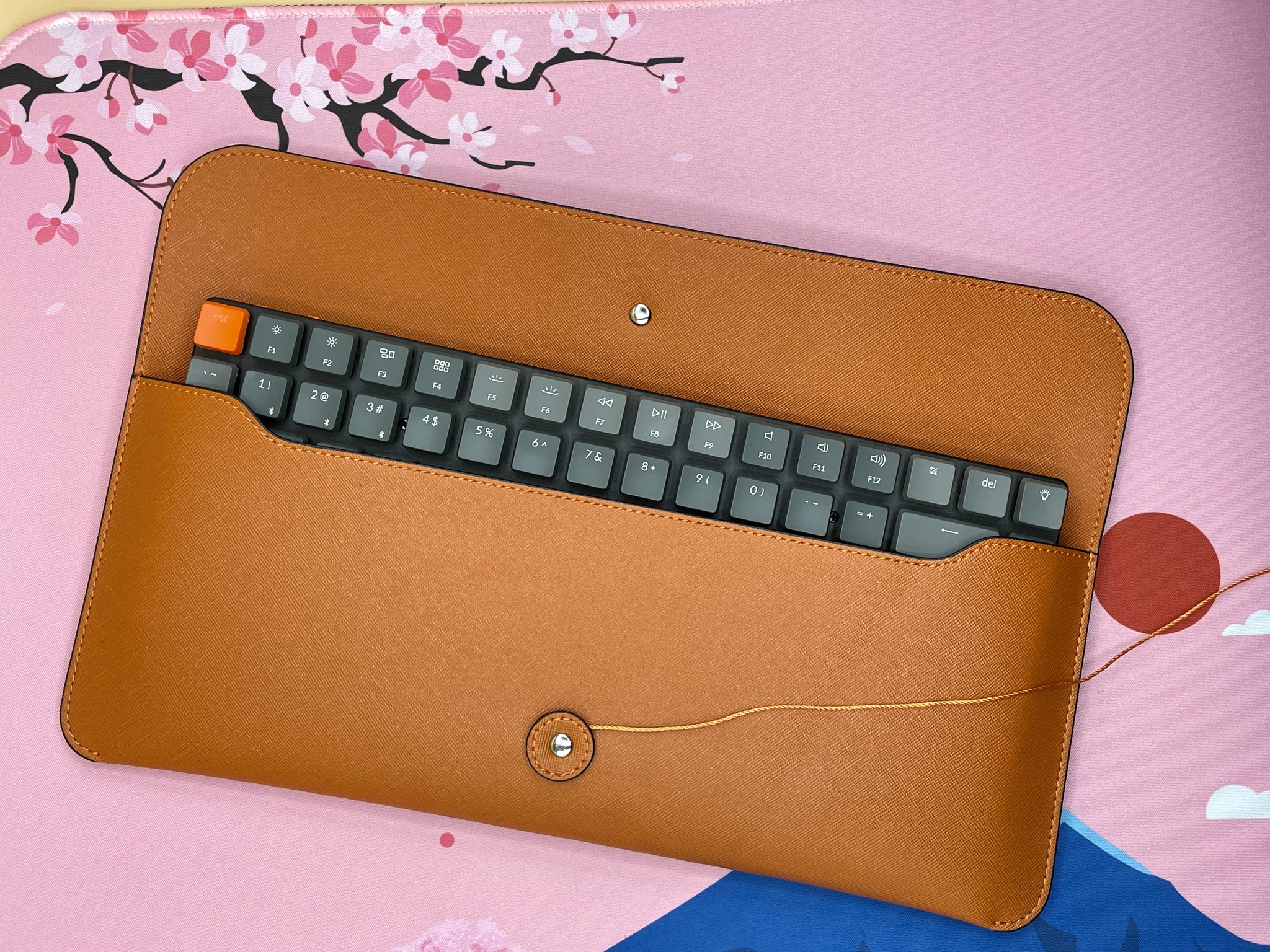







Christine Romero-Chan was formerly a Senior Editor for iMore. She has been writing about technology, specifically Apple, for over a decade at a variety of websites. She is currently part of the Digital Trends team, and has been using Apple’s smartphone since the original iPhone back in 2007. While her main speciality is the iPhone, she also covers Apple Watch, iPad, and Mac when needed.
When she isn’t writing about Apple, Christine can often be found at Disneyland in Anaheim, California, as she is a passholder and obsessed with all things Disney, especially Star Wars. Christine also enjoys coffee, food, photography, mechanical keyboards, and spending as much time with her new daughter as possible.

